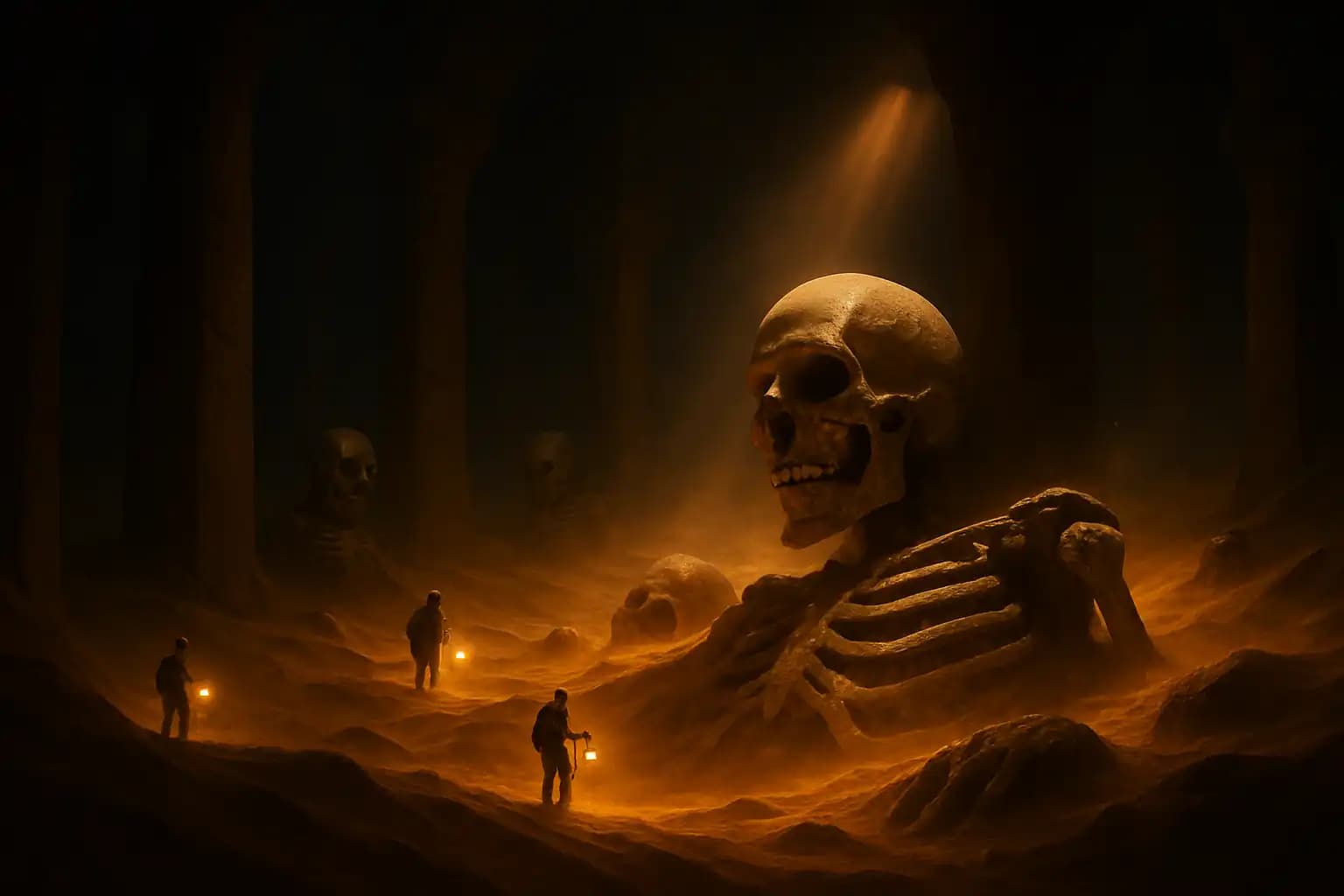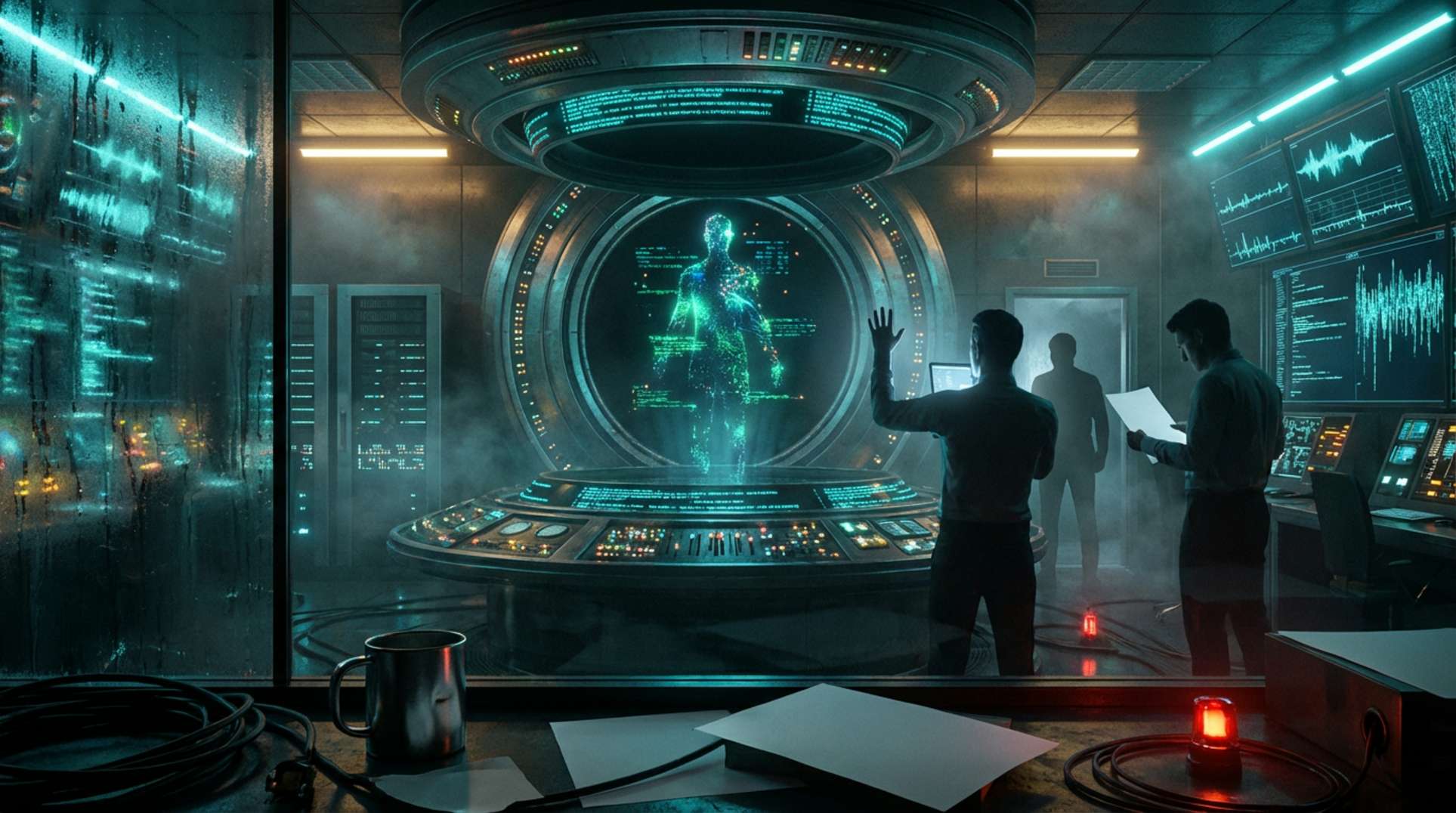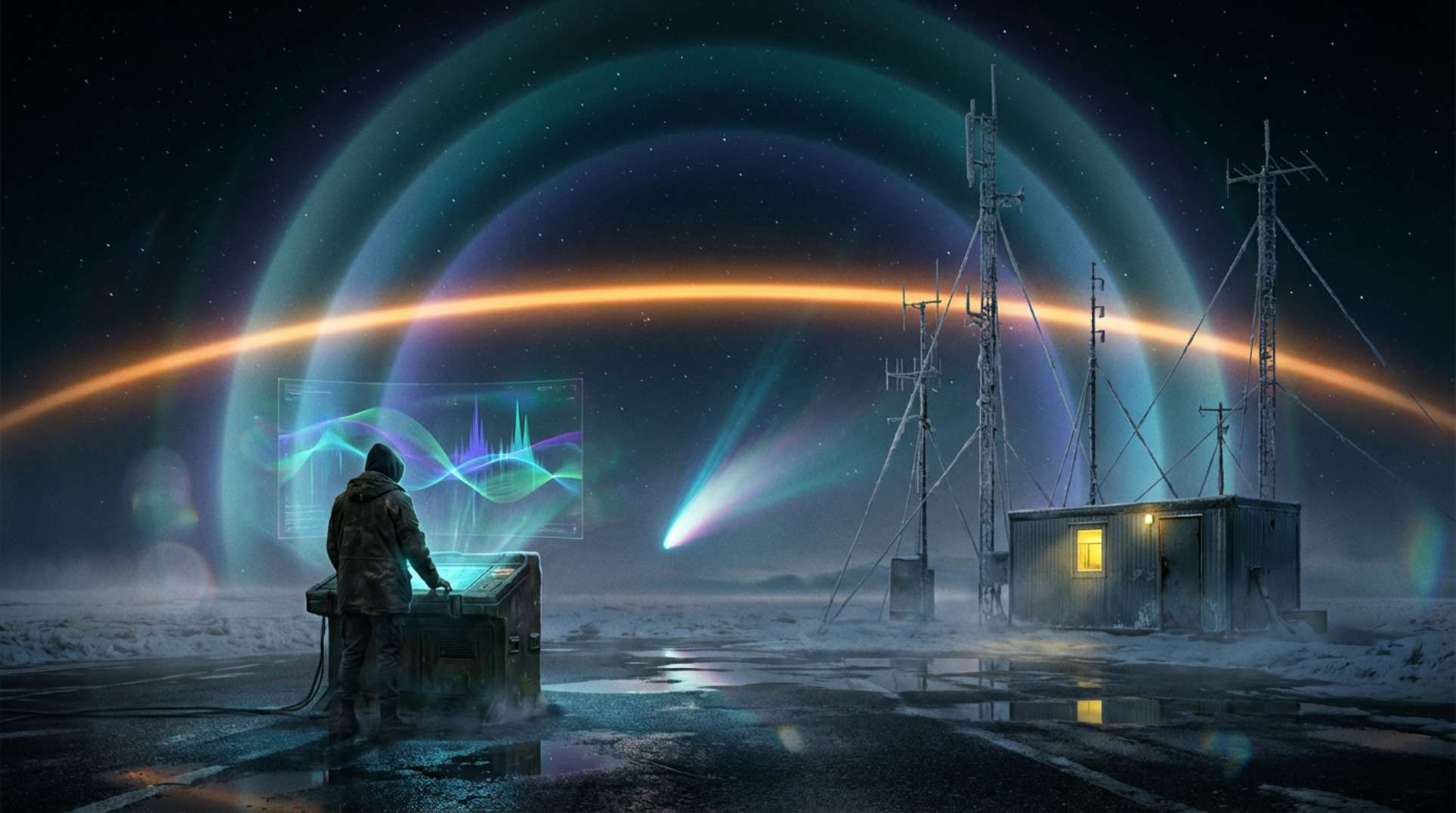Prologue: A Desert That Refuses to Stay Empty
Death Valley earned its ominous name after pioneers perished on its alkali flats. The valley’s harsh daylight hides deeper mysteries. Rumors of underground chambers date back to the 19th-century Borax rush. Miners blasting shafts reported echoing voids and oddly shaped bones. Now a viral video claims modern explorers uncovered an entire realm beneath the dunes—vaulted corridors, cyclopean pillars, and the fossilized remains of giants towering above the tallest prospector. Ground-penetrating radar traces roving anomalies, but the National Park Service says nothing beyond safety advisories. Are we confronting bad folklore, or stumbling toward a discovery that could rewrite North American prehistory?
The First Whispers: Legends, Petroglyphs, and Panamint Shadows
Indigenous Timbisha Shoshone oral history speaks of the Nümü Tümp, “people beneath the sand.” Some anthropologists dismiss the tale as metaphor. Petroglyph clusters near Telescope Peak depict reed boats and elongated human forms that tower over normal hunters. In 1931, a ranch hand unearthed an oversized tibia. Local newspapers printed a single paragraph before authorities confiscated the bone for “further study.” The specimen vanished, joining a shelf of oddities lost in bureaucratic shuffle.
An archived map from 1894 hints at “hollow ground” beneath the eastern escarpment. Modern cavers compared the annotations with digital elevation models from independent surveys and found alignment with unexplained sinkholes. When drones flew into one sinkhole, their magnetometers spiked, batteries drained, and video feeds cut—classic symptoms linked to geomagnetic hotspots from field reports.
The Amazing Explorations Raid: What Really Happened Underground?
Footage from “Amazing Explorations” shows a narrow limestone throat descending 120 meters before opening into a cathedral-like void. Stalactites glow under LED headlamps; footprints—very large footprints—indent the dusty floor. One clip captures a row of ash-filled fire pits, each ringed by vertebrae the size of dinner plates. Skeptics shout hoax, citing zero peer-reviewed documentation. Supporters counter that the explorers’ satellite phones lost signal after an hour, forcing them to prioritize survival over perfect cinematography.
The most controversial segment reveals a wall etched with symbols resembling Anasazi spiral motifs and Phoenician letters. Linguists say the carvings could be ancient graffiti or simple pareidolia. Yet even conservative archaeologists admit the cavern’s mineral crust dates thousands of years older than any known human habitation in the region, raising the possibility that the engravers belonged to a culture lost to textbooks.
Giants in the Geological Record
Could oversized human relatives really have thrived here? Mainstream paleoanthropology claims Homo sapiens rarely exceed seven feet due to metabolic limits. However, some genetic disorders can induce extreme height. Fossil evidence for outsized primates exists—consider Gigantopithecus in Asia. Theorists speculate that an isolated lineage adapted to the cavern’s stable climate, growing larger due to abundant subterranean fungi and possibly giant sloth carrion during flash floods.
Researchers who support this hypothesis point to anomalies documented in archived field notes. Those notes list bone densities that surpass typical mammalian ratios, hinting at a heavier gravity adaptation or specialized cartilage reinforcement. The idea sounds outrageous until you remember that blind albino salamanders flourish in European caves completely cut off from sunlight. Nature repeatedly proves that isolation breeds extremity.
Subterranean Architecture: Artifact or Geology?
Laser scans from the expedition outline passageways in geometric patterns: ninety-degree turns, stair-like terraces, and evenly spaced columns. Geologists concede hydrothermal dissolution can create right angles—rare but not impossible. Yet the floors appear artificially graded, and metallic residue coats certain walls, suggesting tool usage. Metallurgists analyzing site flakes detected an alloy of copper and an unknown trace element that does not match known regional ore signatures.
Similar mystery tunnels crop up in folklore worldwide. Cherokee stories speak of “moon-eyed people” living underground; Andean myths describe Chinkana labyrinths beneath Lake Titicaca. A comparative mythology approach has received renewed attention, following case files like this remarkable dossier. The Death Valley claim fits into a wider pattern: humankind repeatedly hints at deeper neighbors it cannot quite prove.
Guardians, Roadblocks, and the Silence of Agencies
Days after the Amazing Explorations upload, viewers trying to revisit the coordinates found fresh fencing, new “hazard” signage, and unmarked trucks idling nearby. Official spokespeople dismiss cover-up talk, citing sinkhole instability. However, parallels with other rapid government clamp-downs—think of seismic study blackouts chronicled in recent dispatches—keep conspiracy boards active.
Freedom-of-Information requests returned heavily redacted memos referencing “cultural resource sensitivity.” Linguists note that the National Park Service often uses that phrase to shield sacred Native sites. Yet the Timbisha council released a statement denying knowledge of specific underground temples. Something else triggers the secrecy.
Alternate Explanations: Science, Hoax, or Half-Truth?
Natural Karst Maze. Calcium-rich limestone under Death Valley dissolves into vast caverns. Seismic uplifts could fracture ceilings, causing “giant” bones—actually Pleistocene megafauna— to tumble in. Under low light, a camelid femur might resemble a humanoid one.
Hoaxed Media. Deep-fake mapping, forced-perspective videography, and 3-D printed bones could create the illusion. A forensic review reveals dust layering that would take months to replicate convincingly.
Partial Truth. A genuine cavern system holds megafauna fossils, but explorers embellished tales of titanic humanoids to secure sponsorship. The harsh environment prevents immediate verification, allowing them to gain viral clicks before any debunk.
Scientific Path Forward
Researchers call for LiDAR drones equipped with spectrometers to re-enter the site under transparent protocols. Comparative osteology labs should analyze bone microstructures to distinguish primate from mammal. DNA extraction, if collagen remains, could settle debates quickly. The plan sounds straightforward until you remember Death Valley’s legal jurisdiction patchwork. Federal, state, and tribal lands overlap in a bureaucratic knot that slows permit approvals.
Meanwhile, independent spelunkers plot covert descents, trading tips on darknet forums buzzing about unusual transmissions detailed in cryptic briefings. These renegade missions raise safety alarms; one wrong anchor and the valley will claim more victims to its legendary heat.
Why It Matters Beyond Myth-Chasing
If genuine, the discovery rewrites settlement timelines, challenges assumptions about human morphology, and integrates the American Southwest into global megalithic lore. Universities would scramble to fund desert archaeology, shifting budgets from coastal digs to arid badlands. Tourist economies might boom, but conservationists fear a rush of thrill-seekers trampling fragile cryptobiotic soils.
More quietly, military strategists view the tunnels as potential natural bunkers—echoing secrecy around Cold War missile silos. History shows that esoteric discoveries often morph into classified assets long before museum displays. Those who doubt should revisit the pattern of rapid institutional shutdown chronicled across scattered investigations at Unexplained.co.
Conclusion: Footsteps in a Shifting Sands
The sun still bakes Furnace Creek beyond 120 °F. Tour buses queue at Zabriskie Point for Instagram sunsets. Yet somewhere under those golden ridges, stone cathedrals may hold bones that stretch our imagination—and our definition of human. Whether giants once walked beneath Death Valley or modern dreamers spin elaborate yarns, the desert keeps its counsel, daring us to dig deeper.
Until permits clear and lights pierce the vaults again, the mystery breathes in darkness, half myth, half data point, wholly irresistible. If the explorers spoke truth, the valley’s barrenness masks America’s most astonishing archaeological jackpot. If they lied, the hoax itself proves how fiercely we crave wonder in an age of mapped landscapes. Either way, the dunes of Death Valley hum with unanswered questions, and the echo might be a giant’s heart—or merely our own curiosity pounding in our ears.





